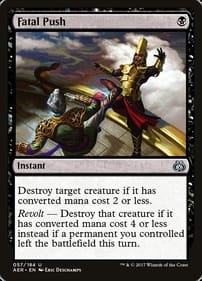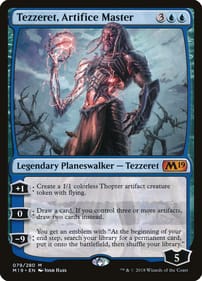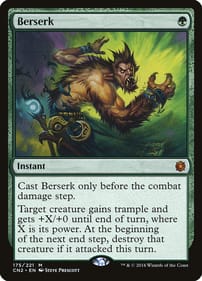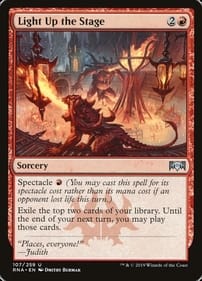Update: As of December 1st, Welcome to Rathe Unlimited is officially out of print (OOP). Legend Story Studios will not be reprinting Welcome to Rathe again.
War is on the horizon. Are you ready to fight to survive?
Welcome to Rathe is Flesh and Blood's premiere set, introducing the game and bringing us four heroes to play. As the first set in a new TCG, the mechanics are fortunately easy to understand. This gives FaB a solid foundation to work with. Each class has a different playstyle and multiple ways to build them.
The core set adds four heroes: Rhinar, an orcish Brute that uses his intimidating presence to frighten and terrify his foes; Bravo, a Guardian that crushes his foes with his unyielding hammer and imposing stature; Katsu, a Ninja who wants to combo off and defeat his opponents with a thousand stings; and Dorinthea, a skilled Warrior that pushes her opponent's defenses to their limit.
Whether you like to be aggressive and keep your opponent on the defensive or work to control the battlefield, there's a strategy in FaB for everyone to enjoy.
Welcome to Rathe Keywords
Welcome to Rathe introduces a number of keywords to the game that are used by some or all of the classes within the set. Here's a quick glossary of terms to watch for before we get into the nitty-gritty of the set:
Combo - A keyword found on Ninja actions. Whenever you play a card with combo, it checks to see what the previous action you played is. If it matches the name on the combo card, the combo effect will trigger.
Crush - A keyword found on Guardian actions. Whenever you successfully hit with an attack and it deals 4 or more damage, then any crush effect on your card will occur.
Dominate - A generic keyword found throughout cards and different classes. A card with dominate can't be defended with more than one card from the defending player's hand, whether that be in the Defense step or the Reaction step. They can still use equipment and any defense reactions in Arsenal, though!
Intimidate - A keyword found on Brute actions. Whenever a card you play says Intimidate, a card chosen at random from your opponent's hand is banished face down until the end of your turn, at which point it returns to their hand. This lowers the number of options your opponent has to defend with, but doesn't deprive them of a card permanently.
Reprise - A keyword found on Warrior actions. Whenever an action with Reprise is defended against a card from the defending player's hand, you will gain the bonus effect. Playing cards from Arsenal, or using equipment to defend does NOT trigger Reprise, however.
The Heroes of Welcome to Rathe
You can likely get an idea for what each class wants to do based entirely on their unique mechanics, and that's before we get into their Hero cards. Let's take a look at our lineup more in-depth, including their starting weapons, Pros and Cons for each hero.
Rhinar, Reckless Rampage - Brute Hero

Rhinar's game plan is to attack hard and scare your opponent to the point of being unable to muster a proper defense. Your main mechanic is Intimidate, which allows you to temporarily deprive your opponent of defensive options and also potentially rob them of important resources by forcing them to use a card defensively that they instead wanted to save for their turn. Rhinar and his hammer, Romping Club, also have the added benefit of caring about 6+ power cards being in the deck. Any time you discard a card as part of an effect, if it has 6+ power, then these effects will trigger and give you the listed bonuses! Though neither Rhinar or Romping Club give you a means of discarding cards themselves, many of Brute's other actions ask you to discard a card as an additional cost to play them.
Savage Swing is perhaps one of the best examples of what a Brute wants in an action card: Low cost to play and high damage. It also requires the player to discard a card as an additional cost, potentially triggering Rhinar and his Club. And it itself has greater than 6 power so it fills that niche, too.
Rhinar Pros:
- The low pitch cost and high damage of your cards means you can run lots of Red cards for their powerful effects.
- Highly aggressive playstyle that forces your opponent on the defensive. It's difficult to outrace a Brute in straight combat.
- Rhinar's starting weapon, Romping Club, deals 4 damage base, which is the highest damage starting weapon (tied with Bravo's Hammer). Seeing as how most cards outside of Defense Reactions only defend for 2 or 3, you can easily land some damage even if you don't have cards to play from hand.
Rhinar Cons:
- Many actions require you to discard a card as part of their cost, meaning you are likely to become fatigued (run out of action cards to play) if you don't end the match quickly.
- Brutes are all aggro, all the time, meaning Rhinar doesn't have much in the way of defense. Brutes get few, if any, defense reactions and instants to use. Welcome to Rathe only gives Rhinar one Defense Reaction and one Instant to protect himself with.
- There is a degree of randomness to playing Rhinar, as the cards you discard are oftentimes chosen at random, and some effects require you to roll a six-sided die.
- Brutes are highly vulnerable to non-attack damage, such as Arcane damage from Wizards and Runeblades.
If you're interested in slamming your opponents for big damage and scaring them into submission, the Brute is the class for you!
Bravo, Showstopper - Guardian Hero

Bravo is much like his name implies: He wants to be big and flashy, building up to a big, explosive turn! Guardians are tied with Brute for being the hardest hitting class in the game, but the difference between them is that Guardians cards have higher resource costs. This leads to Guardian playing a slow but controlling game as you try to outlast your opponent while setting up a bit hit in the late game to finish them off.
The Guardian is something of a control hero. Out of the four classes in Welcome to Rathe, the Guardian has by far the most defensive options available. They excel at denying your opponents resources by forcing them to discard cards, damaging their equipment, or increasing the costs of their actions, among other things. Their Crush ability incentivizes you to hit hard with high damaging attacks to trigger their effects.
Bravo has a slew of Auras — temporary effects that bolster him in some way — that let you set up a powerful next turn or put up a wall to defend yourself against any brutal reprisals.
Bravo Pros:
- You are hard to take down. Bravo has some of the best defensive options out of the Welcome to Rathe heroes, including multiple Auras that bolster his defense, Defense Reactions, as well as every card that is capable of Defending having a Defense value of 3.
- Your attacks hit like a truck! While slower than the Brute, the Guardian is just as capable at laying down the hurt, and thanks to the hit effects and Crush, you often force your opponent to block instead of soaking the hit to avoid the penalty for letting too much damage through.
- Anothos, Bravo's starting hammer, is tied with Romping Club for highest base damage, but it can hit for a whopping 6 if you meet the condition on the card.
Bravo Cons:
- Your big plays are telegraphed to your opponent fairly openly thanks to a lot of your bolstering effects needing to be played Auras the turn before your attack.
- Attacks don't have go again, meaning you'll usually only get one swing in before you turn is over.
- Unlike the Brute, Guardian actions cost a lot of resources to play. You'll need to carefully weigh your card choices and how you sequence your turns to make sure you have enough resources to play what you want.
If you like tanky game play and outlasting your opponents, only to strike when they're exhausted, then Bravo is the hero for you!
Katsu, the Wanderer - Ninja Hero

Who doesn't love ninjas in their fantasy? Katsu, and the Ninja class as a whole, seeks to sequence their turns and Combo off to gain benefits while slicing their opponents to pieces with a thousand cuts! Ninjas have the most Actions with go again, and are quite literally a combo-oriented playstyle thanks to the eponymous mechanic unique to the Ninja. Unlike the other classes in Welcome to Rathe, Katsu uses two weapons instead of one, though the damage of his Harmonized Kodachi is fairly low. Even so, it's easy to pressure your opponent with strike after strike as you chain Actions into one another to whittle your opponent's life down.
Sequencing your moves is inherently important to the Ninja's playstyle, as Combo cares about what order you're playing your cards in. Usually you'll want to play specific cards before finishing your opponent off with your Combo card. Head Jab and Open the Center are likely the first combo pieces you'll see. Playing Head Jab first lets you attack and grants you go again, allowing you to attack a second time and strike with Open the Center, making it more powerful, harder to block, AND allowing you to follow up with a third attack.
Katsu Pros:
- Low resource costs on Actions. The highest cost a Ninja will encounter is 2, but most Actions only cost 1 or even 0. This makes it easy to chain Actions together.
- Katsu's ability allows you to fetch combo pieces from your deck if your attack hits, so you're never left waiting to draw the perfect hand. This means, for example, if you don't have Open the Center, but Head Jab hits, you can discard a 0-cost card to get Open the Center to continue the combat chain.
- It can feel incredibly satisfying to pull off a combo, and they are incredibly devastating when set up right.
Katsu Cons:
- The requirement to use specific cards to trigger Combo limits your deck building choices to an extent.
- Not especially defensive, with many cards only defending for 2 and only having one Defense Reaction to use.
If you want to swarm your foes with a flourish of martial arts and quick cuts, the Ninja is for you! This class is for the combo player at heart.
Dorinthea Ironsong - Warrior Hero

Perhaps the easiest to understand of the four classes in this set is the Warrior, represented by Dorinthea. The Warrior class is all about striking with your equipped weapon! Action cards like Sharpen Steel bolster your weapons innate strength before you strike with them, while Attack Reactions like Biting Blade let you catch your opponents off guard with further bonuses during the Reaction Phase.
Dorinthea likes hit effects. Her sword, Dawnblade, even has one. Any opponent wanting to avoid giving Dorinthea a bonus will need to block out to prevent the damage. Any opponent wanting to defend themselves had best be ready for the Warrior's mechanic though. Reprise triggers whenever an opponent defends against your attacks with a card from their hand. Biting Blade will power up your weapons even further if your opponent has defended against your weapon attacks.
Dorinthea Pros:
- Hard to fatigue, as you'll often be pitching cards to attack with your weapon rather than using Actions like other classes. This means you'll be able to reuse those cards later in the game.
- All of your Actions and Attack Reactions bolster your weapon attacks in some way, or even grant your weapon go again, which is important for Dorinthea's ability.
- Heavy on Attack Reactions, meaning that your opponent never knows what to expect as a follow up to any of your attacks.
Dorinthea Cons:
- No Attack Action cards. Warriors only strike with their weapons, so the game play can become predictable.
- While Warrior actions defend well, unlike the Guardian the Warrior has no inherent way to make themselves more survivable outside of that.
Like the feel of steel in your hands and overwhelming your foes with your martial prowess? Dorinthea, the Warrior, is just for you!
A Note about Generic Actions
Generic cards are in every set in the game, and they can be used by any class. After you've considered how you want to build your hero, you can decide whether you want to shore up some of their weaknesses by using Generic Actions (e.g., using Generic Defense Reactions to make Rhinar more survivable at the cost of his aggressive Brute actions instead), or leaning more heavily into what the hero wants to do by supporting them in some way.
Generic Actions are not strictly weaker than class Actions. They are simply another option to use to build out your decks. There's a lot of ways to build a deck and there's no right or wrong way to do it, so experiment with what you have to find what works for you!
That's all for now! We'll be looking at the next set, Arcane Rising, in our next article, so stay tuned!
Interested in picking up some Flesh and Blood products? Take a look at our online store here!
Notice something and want to offer up a correction or suggestion? Drop us a line at tcg@gameknight.ca







